Oxalis plants, also known as Wood Sorrels, display unique and captivating characteristics that make them a popular choice for indoor gardens. With over 550 species, each Oxalis plant has its own distinct appearance.
Appearance of Oxalis Plants
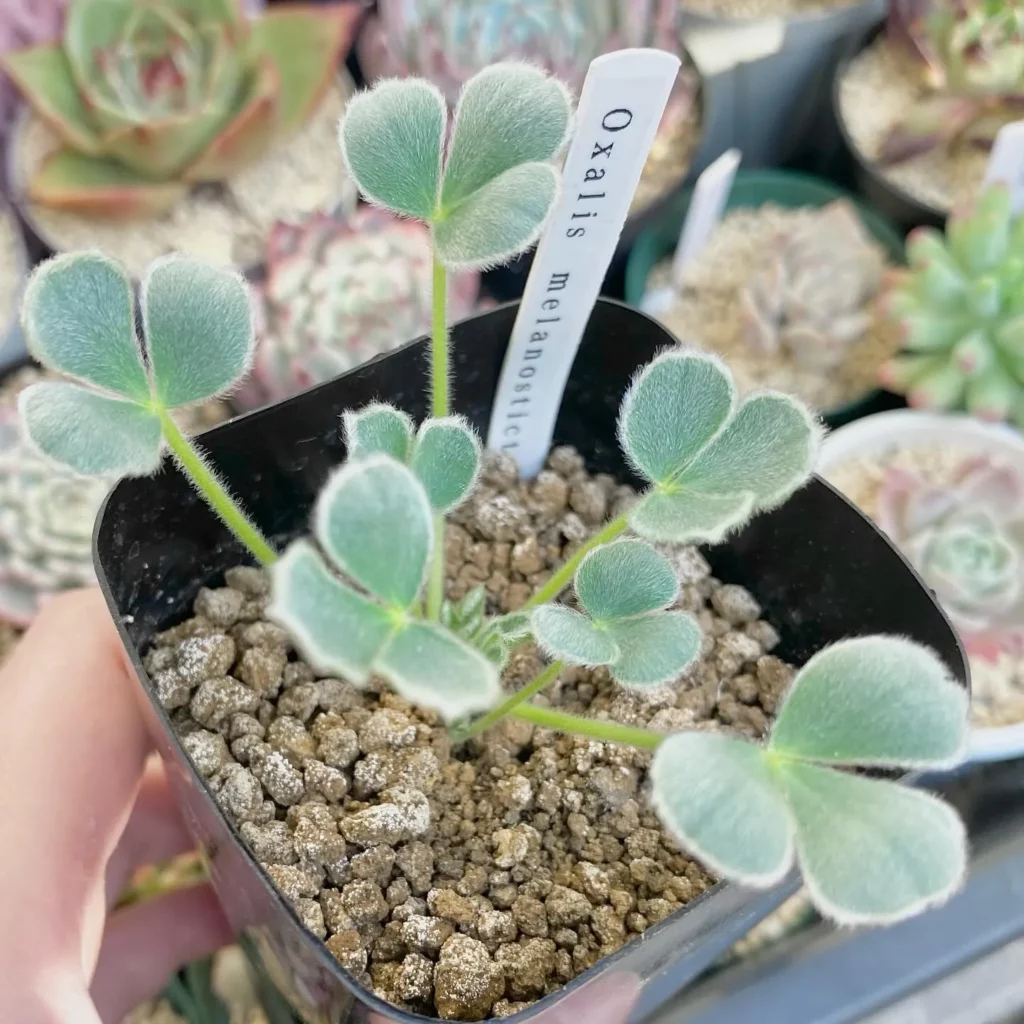


The most notable feature of Oxalis plants is their trifoliate leaves. These leaves consist of three leaflets that can range in color from vibrant purple to various shades of green. Some varieties even exhibit bicolor and variegated patterns, adding a touch of visual interest to any space.
One particularly fascinating species, Oxalis triangularis, stands out with its foldable leaves. The leaves of this plant fold down at night, giving it an enchanting and dynamic appearance. In some species, the flowers also close during the nighttime, adding to the intrigue of these plants.
To get a better idea of the diverse appearances of Oxalis plants, take a look at the table below:
| Species | Leaf Color | Leaf Pattern |
|---|---|---|
| Oxalis triangularis | Purple | Uniquely Foldable |
| Oxalis regnellii | Green | Variegated |
| Oxalis versicolor | Purple and Green | Bicolor |
As you can see, Oxalis plants offer a delightful array of colors and patterns, making them a stunning addition to any indoor garden. Their unique appearance adds a touch of natural beauty to your home or office space.
Light Requirements for Oxalis

Proper lighting is crucial for the growth and health of your Oxalis plants. These beautiful plants thrive in bright indirect to bright direct light.
Oxalis plants are not well-suited for low light conditions. Insufficient light can result in slowed growth, leggy stems, and fewer flowers. To ensure the best care for your Oxalis, it is important to provide them with adequate light.
Place your Oxalis in a location where it can receive bright, indirect sunlight for a significant portion of the day. A north or east-facing window is a great choice. If placing your Oxalis near a south or west-facing window, it may benefit from some protection or shading during the sunniest parts of the day to prevent leaf burn.
In addition to natural light, you can also use artificial lights to supplement your Oxalis plant’s light requirements. LED grow lights or fluorescent lights can be used to provide the necessary intensity and spectrum of light for optimal growth.
| Light Level | Description |
|---|---|
| Bright Indirect Light | Place the Oxalis within 2-3 feet of a well-lit window without direct sunlight. |
| Bright Direct Light | Position the Oxalis within 1-2 feet of a south or west-facing window with filtered or diffused light. |
| Low Light | Avoid exposing the Oxalis to low light conditions as it can result in weak growth and limited flowering. |
Watering Oxalis Plants
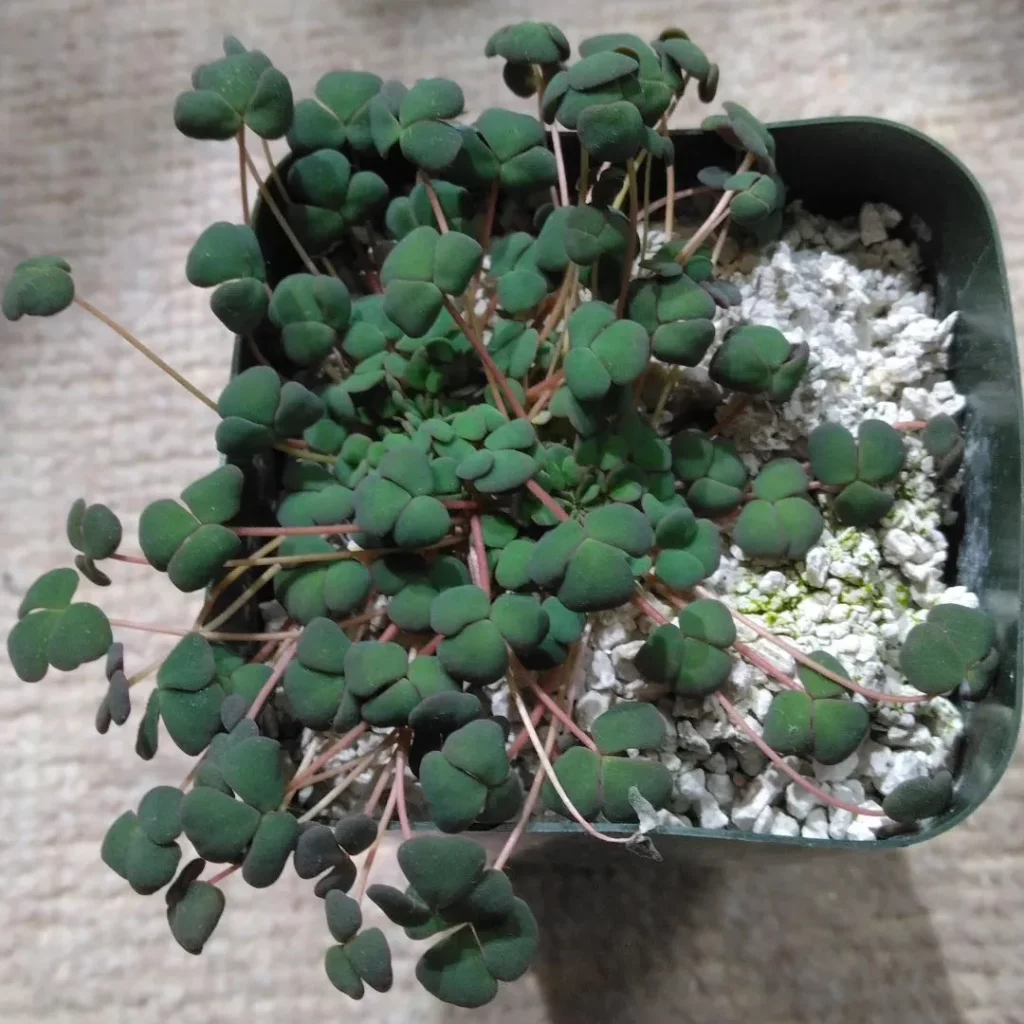
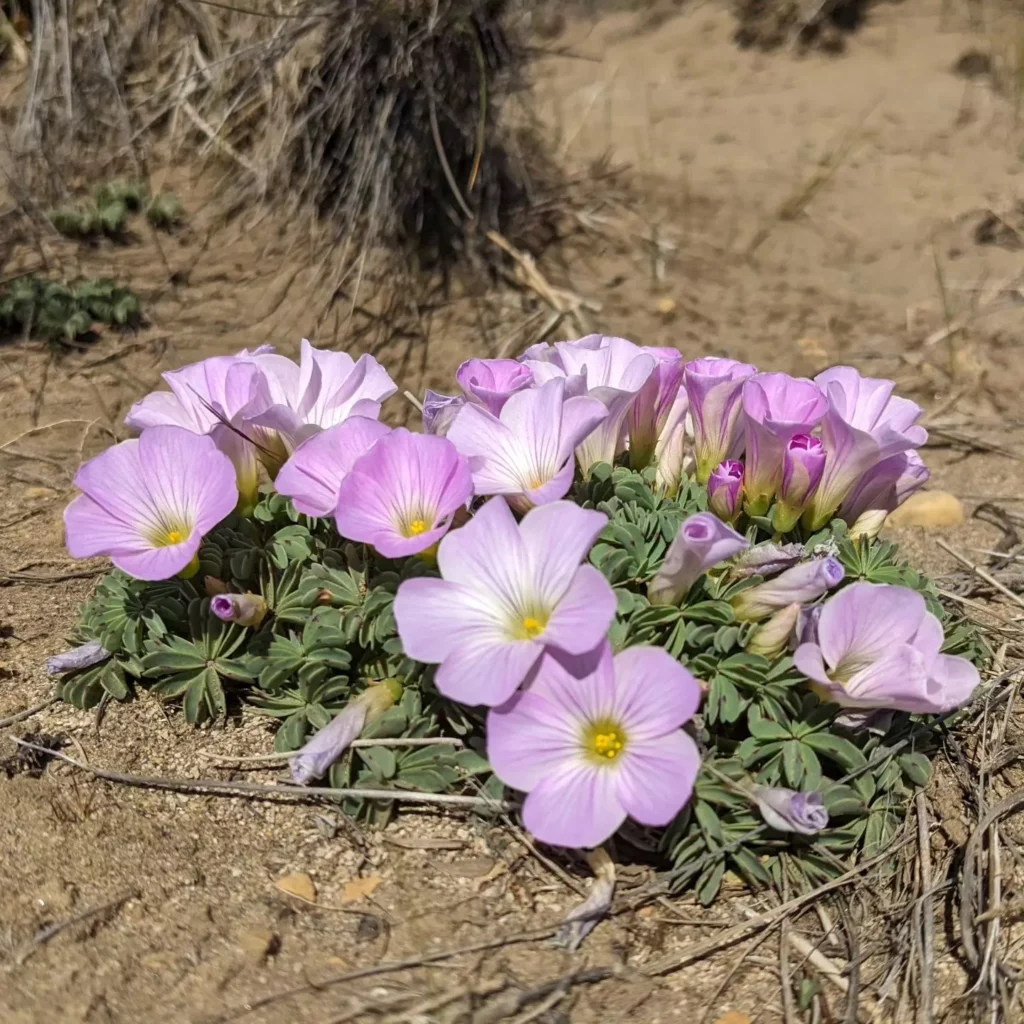
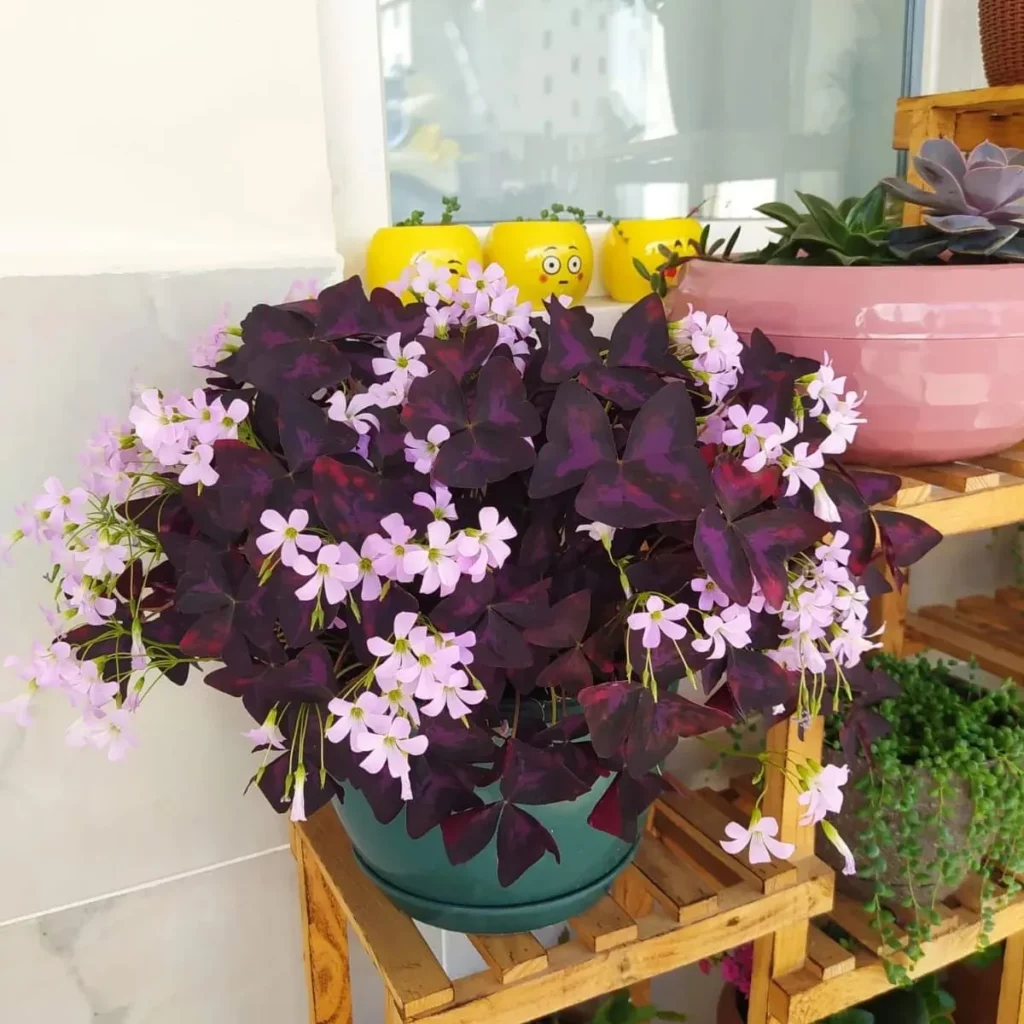
Proper watering is crucial for the health and vitality of your Oxalis plants. The watering needs of Oxalis depend on various factors, such as light conditions and humidity levels. By following these watering tips, you can ensure that your Oxalis plants thrive:
- Frequency: Water your Oxalis plants every 1-2 weeks. Allow the soil to dry out halfway down between waterings. This ensures that the roots have enough oxygen and prevents the risk of overwatering.
- Light conditions: The frequency of watering may vary depending on the light conditions in which your Oxalis plants are placed. In brighter light, the soil may dry out faster, requiring more frequent watering. In lower light, the soil may take longer to dry out, necessitating less frequent watering.
- Monitoring the soil: It’s essential to check the moisture level of the soil before watering your Oxalis plants. Insert your finger about an inch deep into the soil. If it feels dry, it’s time to water. If it’s still slightly moist, wait for a few more days before watering.
Proper watering helps Oxalis plants avoid common issues such as root rot or wilting. Overwatering can lead to root rot, causing the roots to become mushy and unable to absorb water properly. On the other hand, underwatering can result in wilted leaves and crispy leaf edges.
Remember that the watering needs of your Oxalis plants may slightly differ based on their individual requirements. Pay attention to the specific needs of your plants and adjust the watering schedule accordingly.
Fertilizing Oxalis Plants
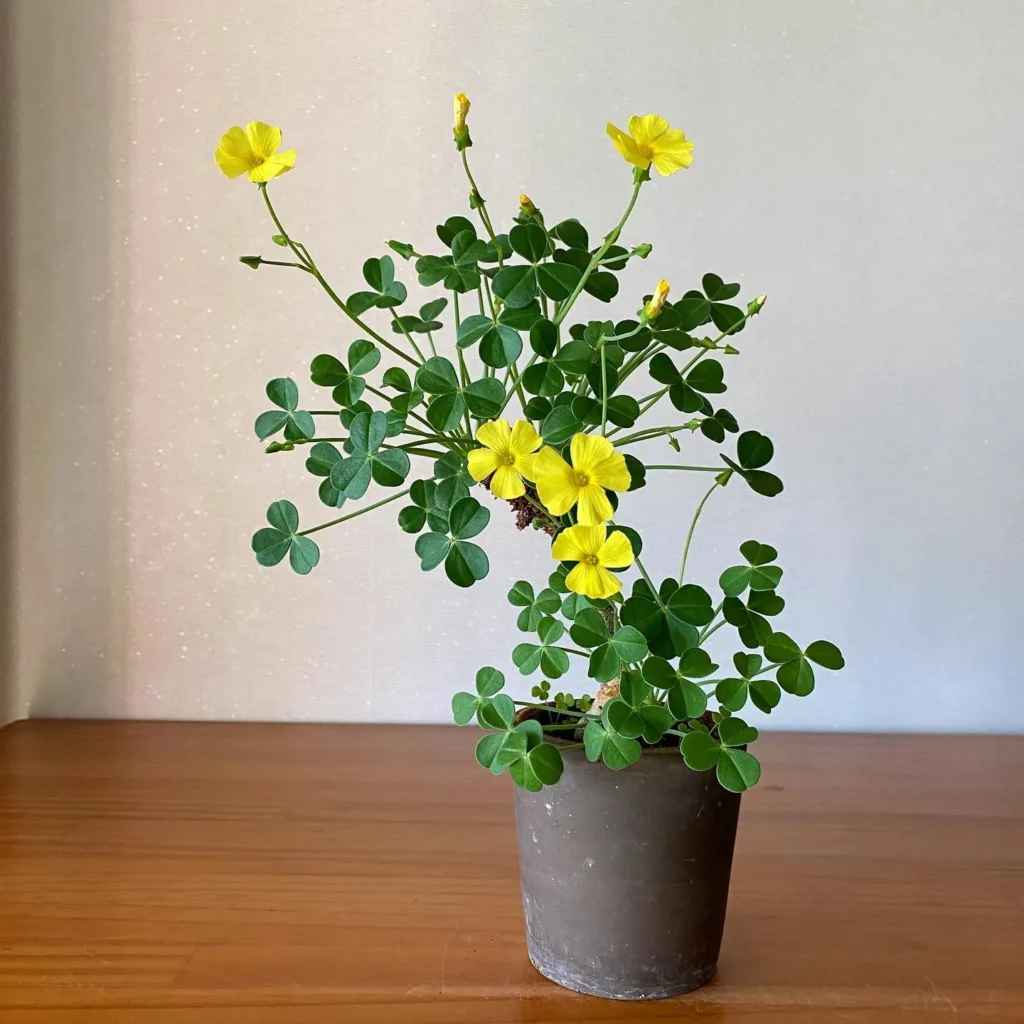
Proper fertilization is key to promoting healthy growth and vibrant foliage in your Oxalis plants. During their active growing season, it is important to provide them with the necessary nutrients to thrive. Fertilizing every 1-2 months with a balanced, water-soluble fertilizer will ensure your Oxalis plants receive the essential elements they need.
When choosing a fertilizer for your Oxalis plants, opt for one specifically formulated for houseplants or general-purpose indoor plants. Look for a balanced fertilizer with equal amounts of nitrogen (N), phosphorus (P), and potassium (K). This balanced ratio will support overall plant health, leaf development, and flowering.
Before applying the fertilizer, make sure the soil is moist. This will help prevent fertilizer burn and ensure proper absorption of nutrients. Dilute the fertilizer according to the package instructions and apply it to the soil around the base of the plant.
Avoid over-fertilizing your Oxalis plants as it can lead to salt build-up in the soil, causing root damage and nutrient imbalances. Follow the recommended dosage on the fertilizer packaging and adjust as necessary based on the specific needs of your plants.
- Fertilize Oxalis plants every 1-2 months during their active growing season.
- Choose a balanced, water-soluble fertilizer formulated for houseplants or general-purpose indoor plants.
- Ensure the soil is moist before applying the fertilizer to prevent fertilizer burn.
- Avoid over-fertilizing to prevent salt build-up and root damage.
- Observe signs of healthy growth to determine the effectiveness of your fertilization routine.
Potting Oxalis Plants
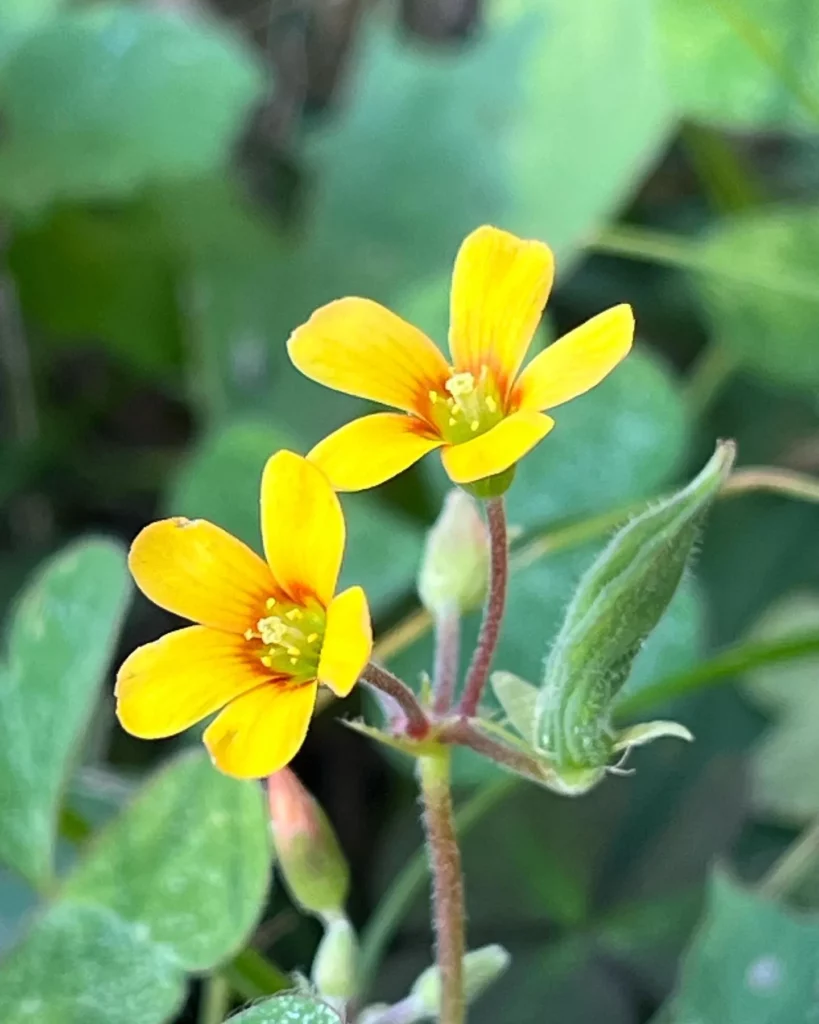
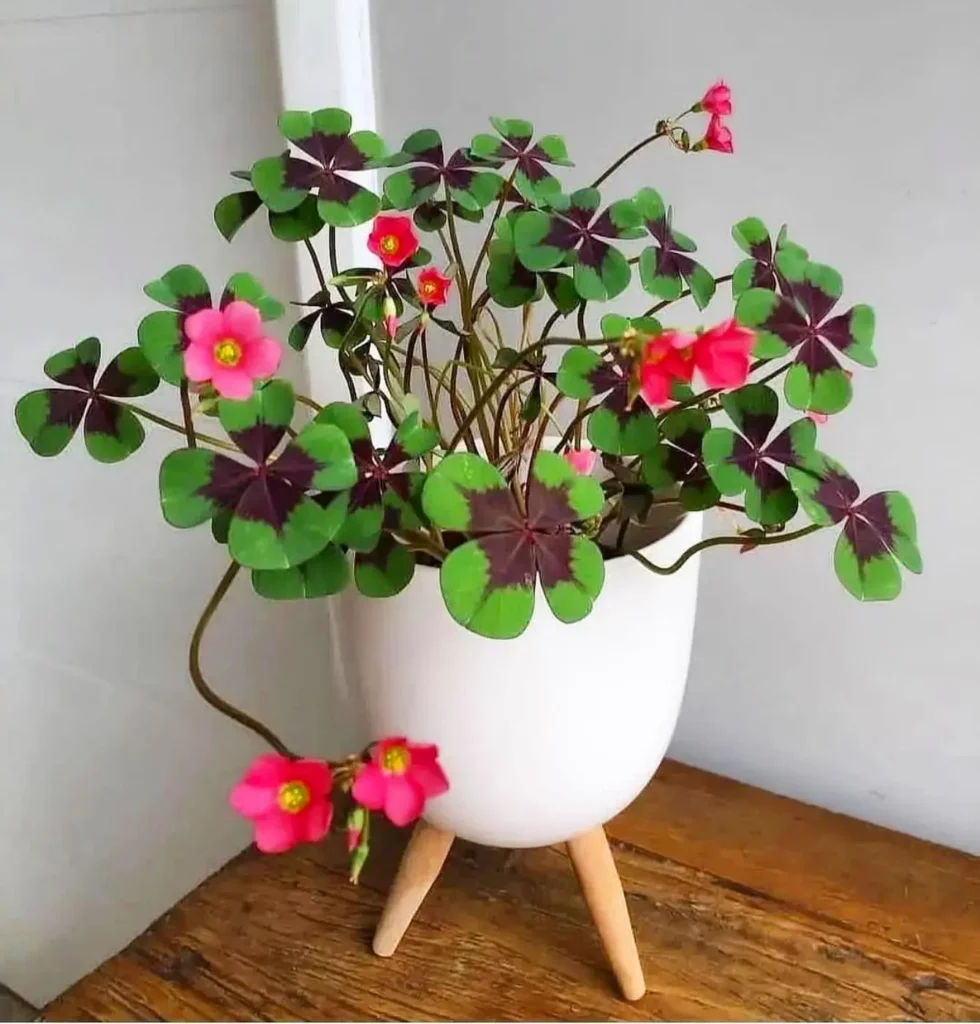

Proper potting is essential for the health and growth of your Oxalis plants. Follow these guidelines for potting and repotting your Oxalis to ensure they thrive in their new homes.
Choosing the Right Pot
When selecting a pot for your Oxalis plants, prioritize drainage. Opt for a pot with drainage holes to prevent waterlogging and root rot. A pot with drainage provides an outlet for excess water, preventing it from sitting in the soil and causing damage to the plant’s roots. Additionally, choose a pot that is slightly larger than the current pot to allow room for growth.
Here is an illustration of how to choose the right pot for your Oxalis:
| Considerations | Recommendations |
|---|---|
| Size | Choose a pot that is 1-2 inches larger in diameter than the current pot to accommodate growth. |
| Drainage | Ensure the pot has drainage holes to prevent waterlogging and promote healthy root development. |
| Material | Opt for a pot made of breathable material like terracotta or clay to help regulate moisture levels. |
Repotting Oxalis Plants
Repot your Oxalis plants every 1-2 years or when you notice the plant outgrowing its current pot. Repotting provides fresh soil, promotes better nutrient absorption, and prevents the plant from becoming root-bound.
Here is a step-by-step guide on how to repot your Oxalis:
- Prepare the new pot by filling it with well-draining soil.
- Water the existing pot to loosen the soil and make it easier to remove the plant.
- Gently remove the Oxalis plant from its current pot, being careful not to damage the roots.
- Place the plant in the new pot, ensuring it is centered and at the same depth as before.
- Add more soil around the plant, pressing gently to secure it in place.
- Water the newly potted Oxalis thoroughly, allowing the water to drain out of the bottom of the pot.
Propagation of Oxalis Plants
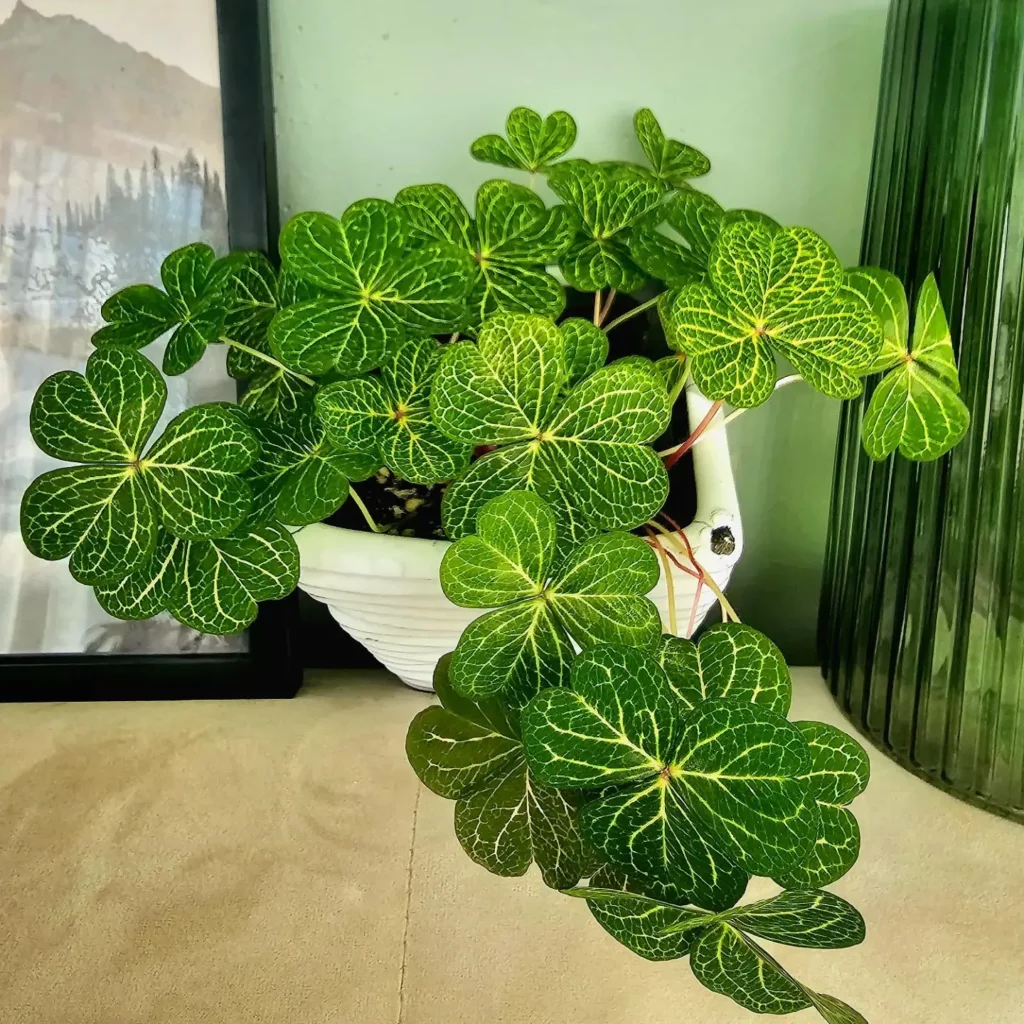
If you want to expand your collection of Oxalis plants or share their beauty with others, propagation is a great way to do so. You can propagate Oxalis plants through division or from leaf cuttings. Here’s a step-by-step guide on how to propagate Oxalis plants:
Propagation through Division
- Carefully remove the Oxalis plant from its pot and gently separate the clumps into smaller sections. Ensure that each section has enough roots and foliage to sustain growth.
- Prepare separate pots with well-draining soil.
- Plant each divided section in its own pot, making sure the roots are covered with soil and the foliage is above the surface.
- Water the newly divided plants thoroughly and place them in a location with bright indirect light.
- Continue to care for the propagated plants as you would with established Oxalis plants, providing regular watering and maintenance.
Propagation through division is a reliable method that allows you to create multiple new plants from a single mother plant. It’s best to perform this process during the active growing season when the plants are actively producing new growth.
Propagation from Leaf Cuttings
Another method of propagating Oxalis plants is through leaf cuttings. Follow these steps:
- Select a healthy leaf from the Oxalis plant.
- Make a clean cut at the base of the leaf, ensuring that it includes part of the stem.
- Prepare a container filled with moist soil or use a glass of water.
- Insert the cut end of the leaf into the soil or place it in the water, making sure the leaf is partially submerged.
- Keep the soil or water consistently moist while the leaf develops roots.
- Once the leaf has developed a sufficient root system, carefully transplant it into its own pot with well-draining soil.
- Continue to care for the propagated plant as you would with established Oxalis plants.
Leaf cuttings offer a simple and effective way to propagate Oxalis plants. It’s important to provide adequate moisture during the rooting process to ensure successful propagation.
Remember, propagation is best done during the active growing season to provide the newly propagated plants with optimal conditions for root development and growth.
| Method | Advantages | Disadvantages |
|---|---|---|
| Propagation through division |
|
|
| Propagation from leaf cuttings |
|
|
Growth and Development of Oxalis Plants
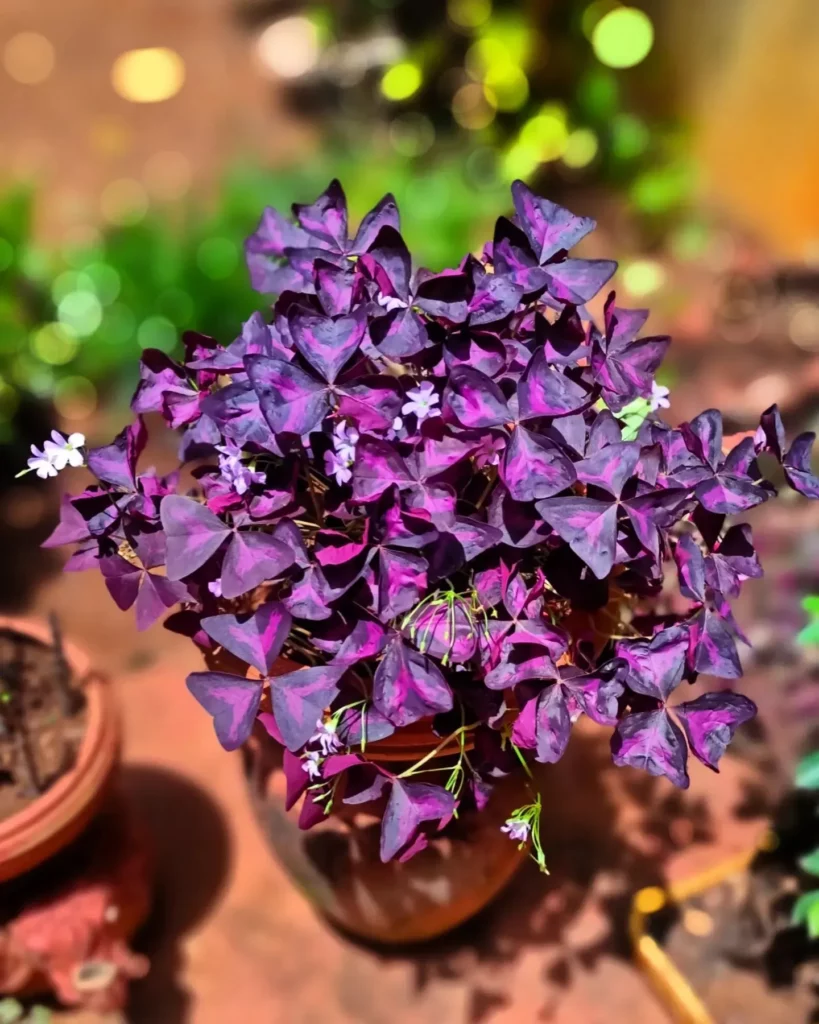

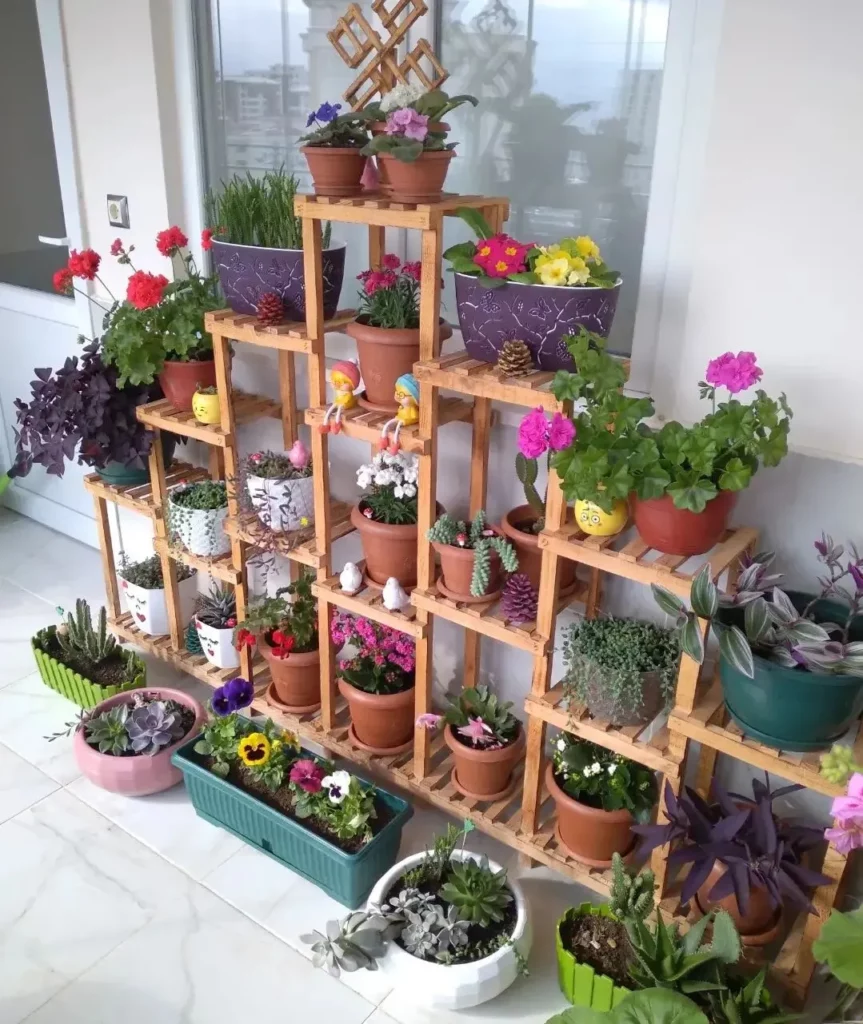
Oxalis plants go through different stages of growth and development, which are influenced by various factors like light, water, and fertilizer. Understanding these stages can help you provide the optimal care to ensure the healthy growth of your Oxalis.
Development Stages of Oxalis Plants
1. Germination: This is the initial stage where the Oxalis plant sprouts from seeds. It requires proper moisture, temperature, and light conditions to successfully germinate.
2. Seedling Stage: Once the seeds germinate, they develop into seedlings. At this stage, the plant forms its first true leaves and starts to establish a root system.
3. Vegetative Growth: In this stage, the plant focuses on leaf development and overall growth. The leaves become more prominent and lush, contributing to the plant’s aesthetic appeal.
4. Flowering Stage: As the Oxalis matures, it enters the flowering stage. The plant produces beautiful blooms, adding a burst of color to your living space.
5. Dormancy: During the winter months, Oxalis plants typically go through a period of dormancy. The plant may lose its leaves and enter a rest phase. Adequate light is crucial during this stage to prevent excessive leaf drop.
The Role of Light, Water, and Fertilizer
Light: Oxalis plants thrive in bright indirect to bright direct light. Insufficient light can lead to leggy growth and limited flowering. Place your Oxalis in a well-lit area, but avoid exposing it to direct sunlight for long periods, as it can scorch the leaves. If natural light is insufficient, supplement it with artificial grow lights.
Water: Consistent and appropriate watering is essential for the growth and health of Oxalis plants. Water the plant thoroughly, allowing the top inch of soil to dry out before watering again. Avoid overwatering, as it can lead to root rot, while underwatering can cause wilting and leaf drop.
Fertilizer: Providing adequate nutrients through fertilization encourages robust growth and vibrant foliage. Use a balanced, water-soluble fertilizer formulated for houseplants. Apply the fertilizer according to the instructions, usually every 1-2 months during the active growing season.
Dealing with Pests and Diseases for Oxalis Plants
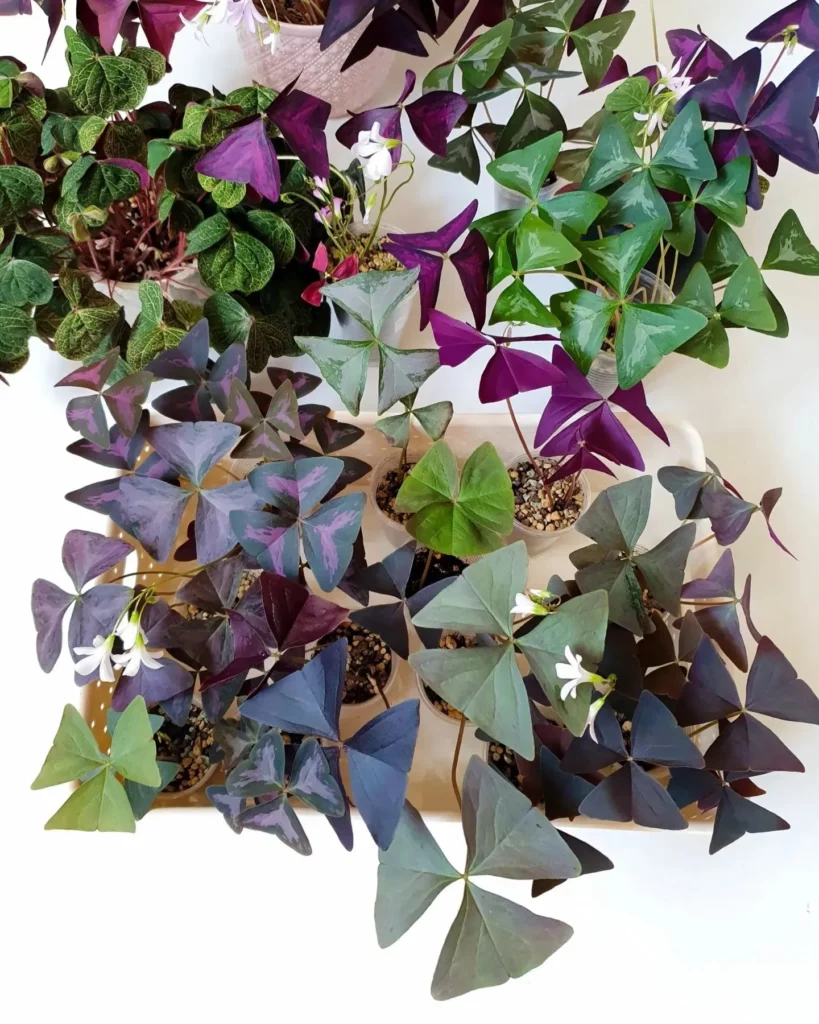
Oxalis plants are generally easygoing and not prone to many pest and disease issues. However, it’s essential to be aware of common problems that can affect their health. The most common pest that can infest Oxalis plants is spider mites. These tiny pests can cause damage to the leaves and stems of the plant.
To treat spider mites on Oxalis plants, you can spray them with horticultural (Neem) oil weekly. Neem oil has natural insecticidal properties and can help control infestations. Additionally, regularly wiping down the leaves with a damp cloth can help remove any existing spider mites and their webbing.
It’s also crucial to avoid overwatering your Oxalis plants as it can lead to root rot. Root rot is a fungal disease caused by excessively moist conditions in the soil. To prevent root rot, allow the soil to dry out slightly between waterings and ensure the pot has drainage holes to allow excess water to escape.
On the other hand, underwatering can cause wilting and dryness in Oxalis plants. It’s important to maintain proper watering practices by watering your plants thoroughly but allowing the top inch of soil to dry out before the next watering. This helps prevent both overwatering and underwatering issues.
Creating an ideal environment for your Oxalis plants can also help prevent common problems. Providing them with adequate light and humidity can promote healthy growth and strengthen their resistance to pests and diseases.
| Common Pests and Diseases of Oxalis Plants | |
|---|---|
| Pests | Diseases |
| Spider Mites | Root Rot |
| Wilting | |
Precautions for Oxalis Plants
Oxalis plants, although beautiful and vibrant, can be toxic to pets if consumed. As a responsible pet owner, it’s important to take precautions to keep your furry friends safe. Additionally, keeping Oxalis plants away from small children is recommended to avoid any accidental ingestion.
If a pet or child ingests Oxalis, it can cause gastrointestinal discomfort and other adverse effects. To prevent such situations, make sure to keep Oxalis plants out of reach. Consider placing them on high shelves, using hanging baskets, or using plant stands to keep them inaccessible to curious little ones.
It’s also crucial to educate yourself and your family about the potential toxicity of Oxalis plants. By understanding the risks, you can take appropriate measures to prevent any accidental consumption. Remember, prevention is key when it comes to keeping your loved ones safe.
In addition to keeping Oxalis plants out of reach, it’s always a good idea to consult with a veterinarian or a poison control center for further guidance on how to handle accidental ingestion. Their professional advice can help you take immediate action and ensure the safety and well-being of your pets.
Conclusion
Proper care is essential for maintaining vibrant and healthy Oxalis plants. By following a few key tips, you can ensure the well-being of your Oxalis and enjoy their beauty in your home.
Firstly, provide your Oxalis with adequate light. These plants thrive in bright indirect to bright direct light, so placing them near a sunny window or providing supplemental grow lights can help them thrive.
Secondly, watering your Oxalis properly is crucial. Aim to water your plants every 1-2 weeks, allowing the soil to dry out halfway down before watering again. Remember, overwatering can lead to root rot, while underwatering can cause wilting.
In addition to light and water, fertilizing your Oxalis during its active growing season can promote healthy growth. Apply a balanced, water-soluble fertilizer every 1-2 months to provide the nutrients the plant needs.
Finally, ensure your Oxalis is potted in well-draining soil and choose a pot with drainage holes to prevent waterlogging. Repot the plant every 1-2 years or when it outgrows its current pot to allow for proper root development.
FAQ
What is Oxalis?
Oxalis is a large genus of flowering plants with over 550 species native to tropical climates. It is commonly known as Wood Sorrels, False Shamrocks, and various other names.
What is the most commonly cultivated species of Oxalis?
The most commonly cultivated species of Oxalis is Oxalis triangularis, which is known for its range of colors and prolific growth.
Do Oxalis plants exhibit any unique movements?
Yes, some Oxalis species exhibit nyctinasty, a rhythmic circadian movement in response to darkness. The leaves of Oxalis triangularis fold down at night, and in some species, the flowers also close during the nighttime.
What are the light requirements for Oxalis plants?
Oxalis plants thrive in bright indirect to bright direct light. They are not suited for low light conditions.
How often should Oxalis plants be watered?
Oxalis plants should be watered every 1-2 weeks, allowing the soil to dry out halfway down between waterings. The frequency of watering may vary depending on the light conditions.
How do I fertilize Oxalis plants?
Oxalis plants benefit from regular fertilizing during their active growing season. A balanced, water-soluble fertilizer can be applied every 1-2 months to promote healthy growth. Over-fertilizing should be avoided.
How should I pot Oxalis plants?
Oxalis plants should be potted in well-draining soil to prevent waterlogging and root rot. They can be repotted every 1-2 years or when the plant outgrows its current pot. Choose a pot with drainage holes.
How can Oxalis plants be propagated?
Oxalis plants can be propagated through division or from leaf cuttings. Division involves separating the plant into smaller clumps and replanting them in separate pots. Leaf cuttings can be rooted in soil or water. Propagation is best done during the active growing season.
What should I do if my Oxalis plant goes dormant?
Oxalis plants go through periods of dormancy, especially during the winter months. It is normal for the plant to lose leaves and go dormant if not provided with enough light. With proper care, Oxalis plants can regrow and thrive.
Are Oxalis plants prone to pests and diseases?
Oxalis plants are generally easygoing and not prone to many pest and disease issues. However, they can be susceptible to spider mites. These can be treated with horticultural (Neem) oil and regular wipe-downs of the plant.
Are Oxalis plants toxic to pets?
Yes, Oxalis plants are toxic to pets if consumed. It is best to keep them out of reach of small children and pets.








